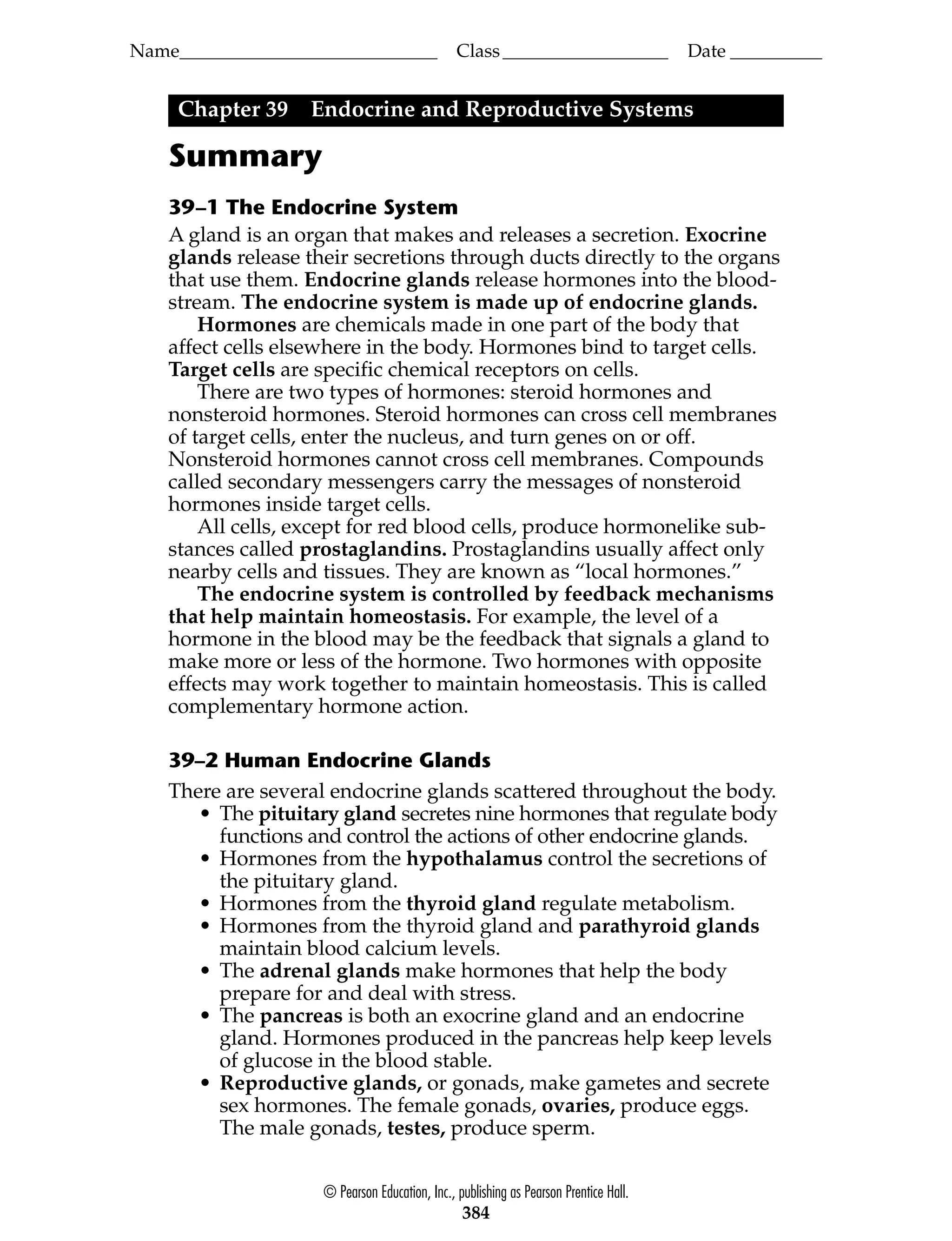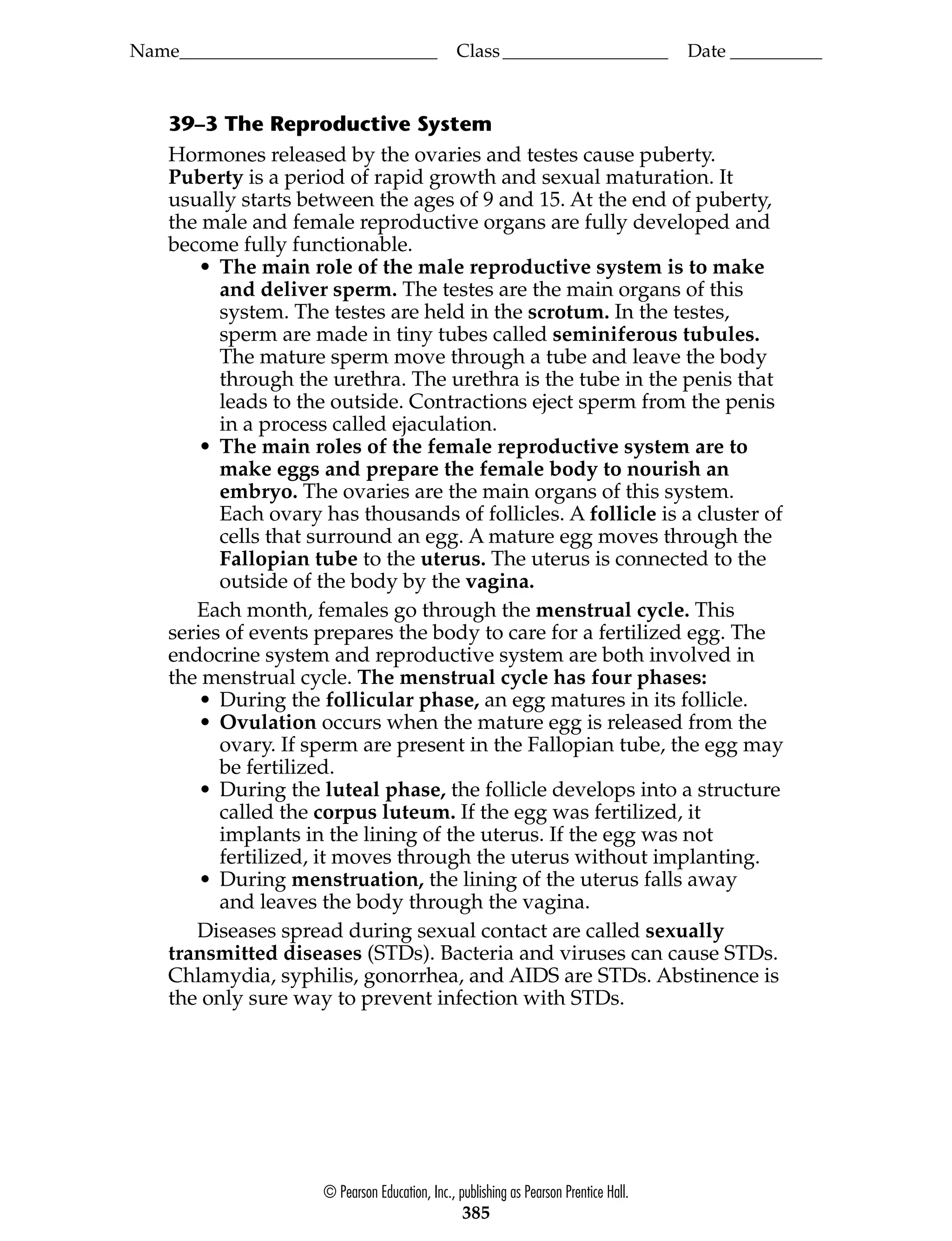The document summarizes key concepts about the endocrine and reproductive systems. It describes how the endocrine system is made up of glands that release hormones into the bloodstream to regulate distant target cells and tissues. It outlines several major endocrine glands like the pituitary, thyroid, adrenals, and gonads/reproductive glands. It also explains the functions of the male and female reproductive systems, the menstrual cycle, fertilization and early human development, and sexually transmitted diseases.


